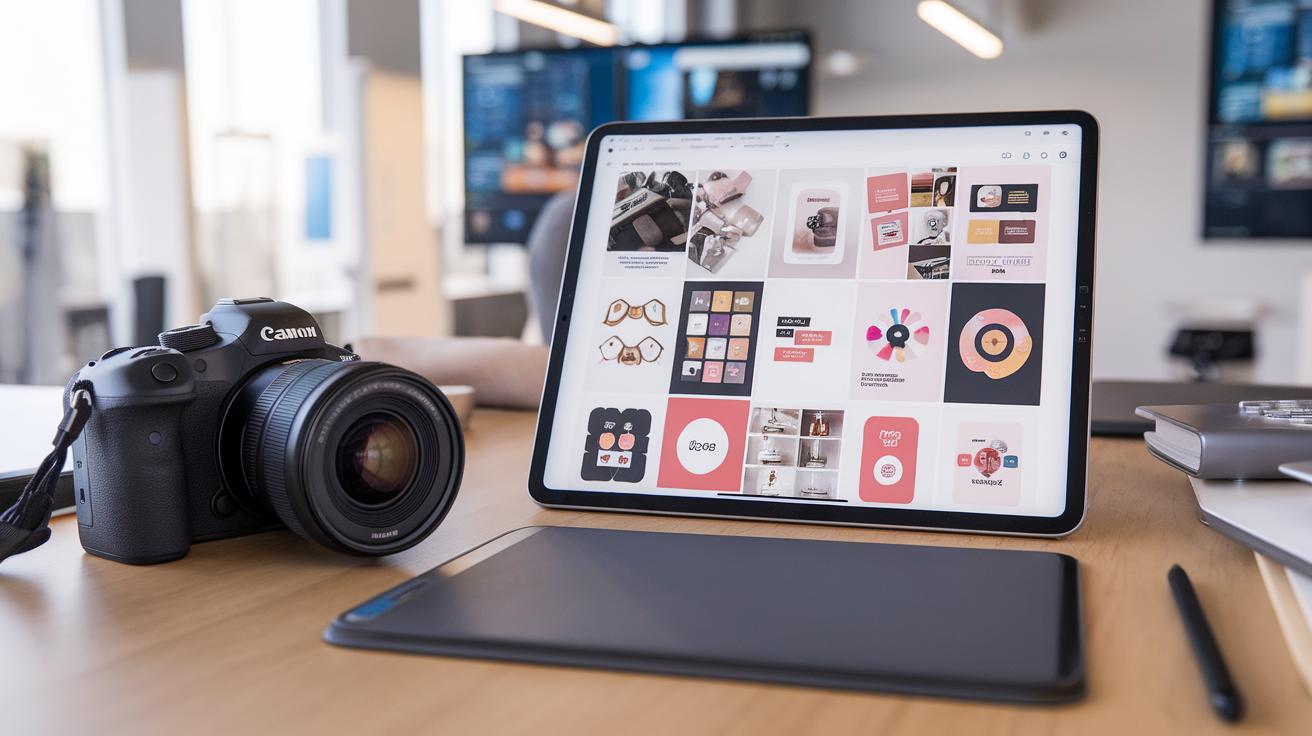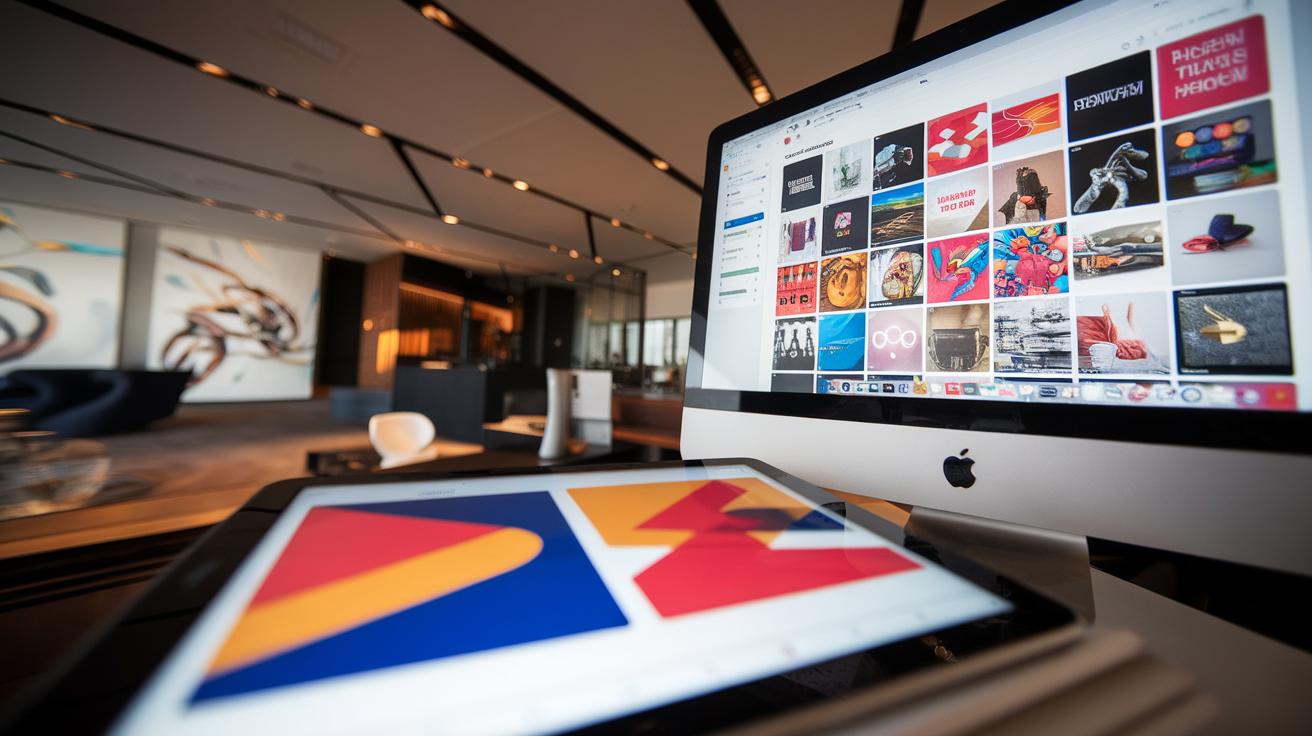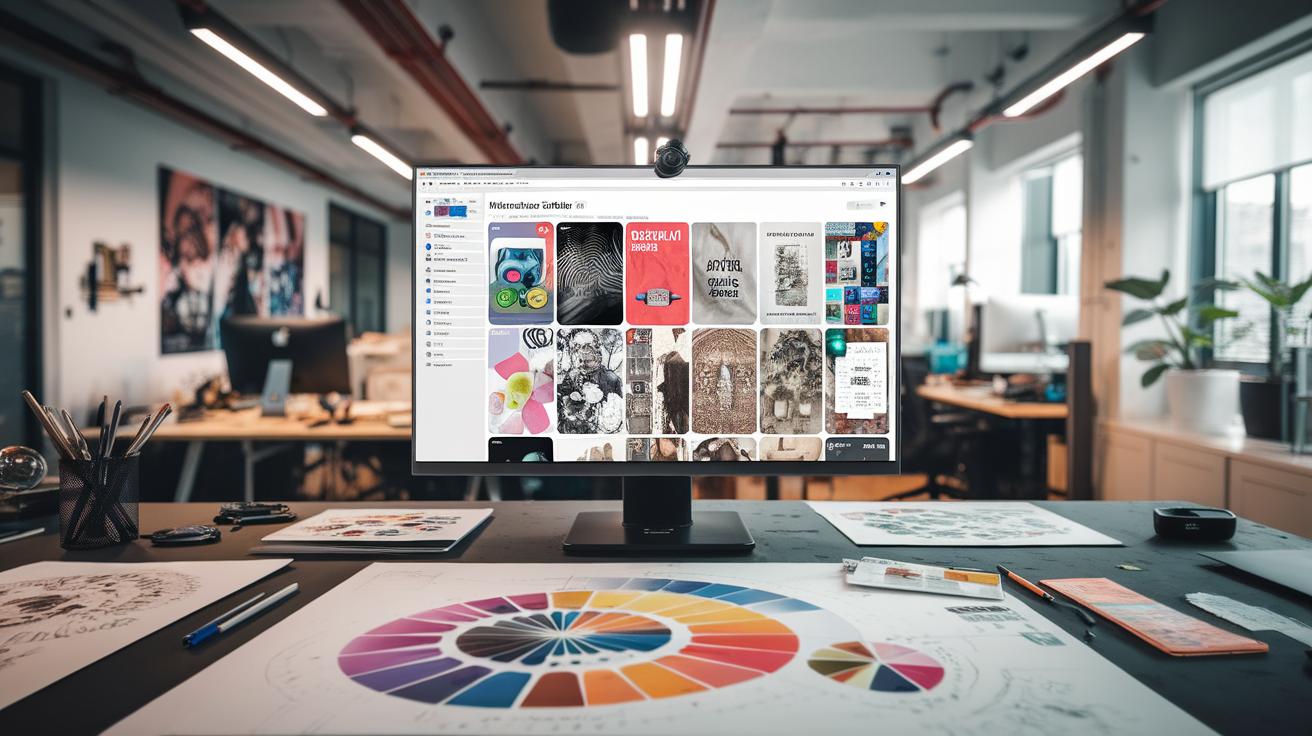Introduction
Pinterest has come a long way as a robust platform for marketers looking to enhance their online presence and reach a broader audience. A pivotal element in this endeavor is the utilization of visual pins, which serve as attention-grabbing tools that can effectively communicate messages through strong imagery and creative designs. Incorporating visual pins into your strategy is essential for maximizing engagement, ensuring that your content stands out in the crowded landscape of digital marketing.
This article explores the intricacies of visual pins within the realm of Pinterest marketing. We will delve into best practices for creating compelling visual pins, discuss the advantages they offer in terms of engagement, and outline strategies to enhance your overall Pinterest presence. Through this comprehensive examination, we aim to empower marketers with the knowledge needed to capitalize on the visual nature of Pinterest for effective audience interaction.
Understanding Pinterest and Visual Pins
Pinterest offers a unique platform dedicated to visual content sharing that drives inspiration and discovery among its users. As a social media tool, it allows individuals and businesses alike to showcase ideas ranging from recipes and fashion to home décor and travel. Users interact by ‘pinning’ images and infographics to their boards, creating a visually appealing layout that enables easy searching and finding of interests. This visual-first approach fosters an environment ideal for curated content and ideal for effective marketing strategies.
Visual pins are at the forefront of Pinterest’s ecosystem, serving as the primary medium through which users engage with content. Distinguished from standard image uploads, these pins are enriched with high-quality graphics, informative descriptions, and often include links that redirect traffic to websites, blogs, or product pages. In the context of marketing, visual pins play a crucial role in not only showcasing products or services but also in storytelling—the ability to convey a brand’s message and ethos through compelling images.
For marketers, understanding the dynamics of visual pins is fundamental for effective Pinterest marketing. Unlike traditional advertising, which can often be more intrusive, visual pins integrate seamlessly into users’ feeds, offering a non-disruptive way to engage potential customers. Their eye-catching nature is designed to attract attention, prompting users to save or interact with the content. With millions of active members searching for inspiration daily, utilizing high-quality visual pins can significantly enhance a brand’s visibility and reach.
The interactive potential of visual pins opens several avenues for user engagement. Businesses can employ rich pins, which automatically sync information from their websites to the Pinterest platform, ensuring that users have updated details about products or articles. This integration boosts user confidence and promotes more meaningful engagements. As a part of a comprehensive marketing strategy, visual pins should not only be aesthetically pleasing but also relevant, easy to understand, and optimized for both user experience and searchability on the platform. By leveraging the powerful capabilities of visual pins, brands can cultivate deeper connections with their audience while driving traffic and sales effectively.
Why Visual Pins Matter in Marketing Explore the Significance of Visual Pins in a Comprehensive Marketing Strategy
The Impact of Visual Appeal on User Engagement
Visual pins have emerged as a cornerstone in digital marketing strategies, particularly on platforms like Pinterest. The engaging nature of well-crafted visual content plays a pivotal role in capturing the attention of users. When users scroll through their feeds, they are inundated with images and text. It is the visual component that stands out and draws them in, making visual pins indispensable for enhancing engagement.
The psychology behind visuals is profound; studies show that people process images 60,000 times faster than text. As such, visual pins allow marketers to convey their messages and brand stories quickly and effectively. Colors, compositions, and imagery can evoke emotions and drive engagement, making them critical for capturing the essence of a brand’s identity in a single glance. By leveraging this knowledge, businesses can optimize their visual pins to resonate with their target audience, increasing the likelihood of interactions such as clicks, saves, and shares.
Engaging Your Audience Through Compelling Visuals
Maximizing engagement involves more than simply posting eye-catching images. The narrative behind each visual pin plays a crucial role in audience connection. Marketers should aim to create visuals that tell a story, inviting users to engage further with the content. Effective visuals often include relatable scenarios, aspirational ideas, or practical advice, which can incite users to save pins for later reference. This builds a repository of appealing content that users associate with a brand, thereby fostering loyalty and return visits.
Incorporating diverse formats like infographics, tutorials, and inspirational quotes into visual pins can enhance interaction rates. Each format provides unique value and can cater to various segments of the audience, ensuring that there is something for everyone. As users begin to engage with these visual elements, the chances of re-pinning and sharing contents increase, thereby amplifying reach.
A thorough understanding of audience behavior is essential in creating visuals that speak to their preferences and needs. Employing analytics tools can provide insights into which types of visuals resonate best with target demographics. Marketers can refine their strategies accordingly, focusing on the elements that yield the highest engagement levels.
By prioritizing the creation of visually appealing content, brands can harness the dynamic potential of visual pins in driving engagement and enhancing their overall marketing efficacy. This strategic focus not only elevates brand presence on Pinterest but also contributes to broader marketing goals, such as increasing website traffic and conversion rates.
Creating Effective Visual Pins Steps to Maximize Engagement
Understanding Your Audience
The foundation of creating effective visual pins lies in understanding the audience you are trying to reach. Research their preferences, demographic details, and interests. Utilize Pinterest analytics tools to gauge what type of content resonates most with your target audience. This insight will guide not only the color palette and imagery you choose but also the style and tone of the message you want to convey.
Choosing the Right Images
The images you select for your visual pins should be high-quality, eye-catching, and relevant to the content. Consider using original photographs, graphics, or illustrations that align with your brand identity. Images should be rich in color and visually appealing, as eye-catching graphics naturally attract more clicks. Experiment with various formats; vertical pins tend to perform better on Pinterest, so prioritize images with an aspect ratio of 2:3 or 1:3.2.
Incorporating Text and Call-to-Actions
Text overlays can enhance your visual pins by providing context. Aim for concise, impactful phrases that summarize the pin’s focus. The font should be clear and readable, ensuring that it stands out against the background image. Additionally, include a strong call-to-action (CTA) that encourages users to engage, whether it’s “Learn More,” “Shop Now,” or “Get Inspired.” A well-placed CTA can compel viewers to click through and explore your website or content further.
Utilizing Branding Elements
Incorporating branding elements is instrumental in fostering brand recognition. Use consistent colors, logos, and typography across all your visual pins. This not only helps in establishing a recognizable brand identity but also builds trust within the audience. When users see your brand consistently, they are more likely to engage with your content and remember it in future interactions.
Testing and Analyzing Performance
Continuously test different visual pin designs to identify what works best for your audience. A/B testing various imagery, text overlays, and CTAs can reveal valuable insights into user preferences. Utilize Pinterest Analytics to monitor engagement metrics such as impressions, saves, and clicks. Assess these metrics regularly, and adjust your strategies based on the performance data to ensure ongoing improvement.
The Role of Keywords and SEO in Visual Pins
Maximizing Discoverability through Effective Keyword Usage
Pinterest marketing promoting visual pins are not solely about striking aesthetics; they also need to be strategically crafted for discoverability. Utilizing keywords effectively is paramount to enhance engagement and reach a broader audience. When creating visual pins, consider the language and terms your target audience is likely to search for. Conducting keyword research helps identify popular search terms within your niche, allowing you to optimize your pins accordingly.
Begin by integrating primary keywords into the pin’s title and description. This not only informs potential viewers about the content but also aligns with Pinterest’s algorithm that prioritizes relevant keywords. Avoid keyword stuffing; instead, aim for a natural incorporation that flows well within the context. For instance, if your visual pin is about “healthy meal prep ideas,” ensure this phrase appears both in the descriptive text and any accompanying hashtags.
SEO strategies also extend to image file names, which often go overlooked. Naming your image files with descriptive, keyword-rich titles enhances their searchability. Instead of using generic file names like “image1.jpg,” consider a more descriptive option like “healthy-meal-prep-ideas.jpg.” This small change can significantly influence how your pins rank in search results.
Utilizing Rich Pins for Enhanced Visibility
Rich pins can elevate your visibility further on Pinterest. These pins pull extra information from your website, strengthening content relevance and marking your pins as authoritative. There are three types of rich pins—product, article, and recipe—which each serve unique purposes. Ensure that these rich pins include relevant keywords in the accompanying descriptions to improve SEO while providing users with enriched context about the linked content.
Engagement also benefits from well-structured boards, which should align with your overall keyword strategy. Organize your boards around specific themes or topics, consistently using relevant keywords in board titles and descriptions. This grants users an easier navigation experience while solidifying your brand’s presence on Pinterest.
Monitoring metrics can provide insights into your keyword performance. Utilizing Pinterest analytics can reveal which keywords drive traffic and engagement, allowing for ongoing adjustments to your strategy. This iterative process is vital for maintaining relevance in an evolving landscape.
Measuring Engagement and Performance Analyzing Visual Pins to Maximize User Interaction
Understanding Pinterest Analytics for Visual Pins
Tracking the performance of visual pins on Pinterest is fundamental for marketers aiming to enhance user engagement. Pinterest offers its users a robust analytics tool that provides detailed insights into how pins are performing. By monitoring key metrics such as impressions, saves, clicks, and overall engagement rates, marketers can gauge the effectiveness of their visual content.
Impressions refer to the number of times a pin is viewed, while saves indicate how many users have added the pin to their boards. Both metrics are vital as they reflect the reach and interest of a pin. User interactions, such as clicks leading to a linked website, provide direct insight into the pin’s ability to convert views into traffic. This data not only informs marketers about which pins need adjustments but can also highlight trends that resonate with the target audience.
Evaluating Engagement Through Other Metrics
Beyond the built-in Pinterest analytics, other analytics tools can provide a broader perspective on performance. Tools such as Google Analytics can track referral traffic from Pinterest to a website, revealing how well visual pins convert interest into action. Key performance indicators to focus on include:
- Click-through Rate (CTR): This percentage shows how many people clicked on the pin relative to its impressions, offering insight into the effectiveness of the pin’s visual appeal and call to action.
- Conversion Rate: This metric tracks the percentage of users who complete a desired action on the landing page after clicking through from a pin, helping assess whether the pin aligns with user expectations.
- Engagement Rate: Calculating the total engagement (saves + clicks) divided by total impressions provides a clearer picture of how engaging a pin truly is.
Consistent testing and A/B comparisons of different pin designs can significantly aid in identifying which strategies yield the highest engagement levels. Small tweaks in visuals, captions, or even colors can lead to substantial differences in user interaction levels.
By meticulously analyzing these metrics and trends over time, marketers can continuously refine their visual pin strategies to boost engagement and drive traffic effectively. As the landscape of Pinterest evolves, staying agile and leveraging these insights will empower marketers to optimize their visual content for increased interaction community-wide.
Leveraging Trends for Visual Pin Success Examine How to Leverage Current Trends and Seasonal Interests to Create Timely and Relevant Visual Pins
Staying relevant in the ever-changing space of Pinterest requires an astute understanding of current trends and seasonal interests. These elements play a pivotal role in enhancing user interaction and maximizing engagement with visual pins. By tapping into what is currently capturing attention, brands can craft content that resonates deeply with their audience, ultimately translating into increased visibility and interaction.
Identifying Trends and Seasonal Themes
Understanding where to identify trends is key. Utilize Pinterest itself as a source, where the search bar often offers predictive suggestions based on popular queries. Trend reports and social media analytics tools can also provide insights into what is currently capturing public interest. Keep an eye on seasonal themes such as holidays, back-to-school periods, or seasonal fashion, which can be pivotal for tailoring pin content. Notably, aligning visual pins with these timelines ensures content is not just timely but resonates with users’ current needs and interests.
Creating Relevant and Timely Visual Pins
Once relevant trends are identified, it’s essential to translate them into captivating visual pins. The visual aspect of Pinterest is fundamental; therefore, aesthetic quality must complement the trends being followed. For instance, if autumn is approaching, utilize warm colors, cozy imagery, and relatable content that reflects this seasonal change. Creating infographics that highlight recipes, decorating tips, or fashion choices that align with the current season can significantly boost engagement.
Consider incorporating timely events into your visual strategy. National holidays or global events offer rich opportunities to create unique content. For example, designing pins around Earth Day that promote eco-friendly practices or recipes that fit into Thanksgiving gatherings can attract a large audience. Timeliness fosters relevance, and timely content encourages users to share and engage, amplifying reach.
Another effective strategy is to use trending hashtags and keywords in your pin descriptions. This not only enhances searchability but also situates your content within a broader conversation, making it more relatable and shareable. By aligning visual pins with both trends and seasonal themes, brands can create a dynamic visual presence that not only captivates but retains the audience’s attention, leading to ongoing engagement.
Utilizing Visual Pin Tools and Resources
Tools for Creating and Managing Visual Pins
Creating eye-catching visual pins is essential for engaging audiences on Pinterest. Fortunately, numerous tools are available to streamline the process, making it easier to design, organize, and analyze your visual content. By using the right resources, you can enhance not only the quality of your pins but also their effectiveness in engaging users.
One of the most popular graphic design platforms is Canva. This user-friendly tool offers a vast array of templates specifically designed for Pinterest, ensuring that your pins are not only visually appealing but also optimized for the platform. With drag-and-drop features and customizable elements, Canva allows marketers to create pins that resonate with their target audience while maintaining brand consistency.
Another valuable resource is Tailwind. This platform provides a suite of features tailored for Pinterest, including scheduling, analytics, and collaboration tools. Tailwind’s smart scheduling options suggest optimal posting times based on user engagement patterns, ensuring that your pins are seen by the maximum number of people. Furthermore, its analytics tools allow you to track which pins engage your audience the most, aiding in refining your future visual strategies.
For those looking to elevate their photography or imagery, Adobe Spark is an excellent choice. This design platform emphasizes striking visuals and allows users to create stunning graphics in mere minutes. The integration of video elements into your pins can further create dynamic content that captures attention quickly.
Don’t overlook the importance of utilizing Pinterest’s native features as well. The platform itself offers tools to create Video Pins, Idea Pins, and Carousel Pins—all of which can significantly boost engagement rates. Understanding how to utilize these features effectively can enhance the scope of your content beyond traditional static pins.
Complementing these tools with effective asset management systems—such as Google Drive or Dropbox—ensures that your visual content is both organized and easily accessible. This organization allows for quick retrieval during busy marketing campaigns or when seasonal content is in high demand.
Harnessing the power of design tools, scheduling applications, and creative resources helps marketers craft compelling visual pins that engage audiences while maximizing reach on Pinterest. Through effective utilization of these resources, creating visually striking content becomes much more viable and rewarding.
Engaging with Your Audience on Pinterest The Importance of Interaction and Community Building
Connecting Authentically with Your Audience
Engaging effectively with users who interact with your visual pins is paramount for nurturing a strong community on Pinterest. Unlike other social media platforms, Pinterest serves as a unique visual discovery engine where users actively seek inspiration and ideas. Therefore, it is vital to create a two-way interaction that encourages ongoing dialogue with your audience.
Responding to comments on your pins is one of the simplest yet most effective ways to foster engagement. When users take the time to leave a comment, whether it’s a question or a compliment, acknowledging their input not only makes them feel valued but also encourages others to engage further. This interaction can be amplified by asking open-ended questions within your pin descriptions, inviting users to share their experiences or opinions. For example, if your pin features a recipe, consider asking followers about their favorite variations or substitutions.
Building a Community Around Shared Interests
Creating a sense of community goes beyond mere engagement; it requires the cultivation of shared interests and values. By consistently engaging with your audience, you can identify common themes that resonate with your followers. This could lead to content that aligns more closely with their interests, increasing loyalty and fostering deeper connections.
Consider organizing Pinterest boards that allow users to contribute their own content. By doing so, you invite your audience to take an active role in shaping the community. These collaborative boards can serve as a platform for users to share their own visual pins, driving engagement and expanding the reach of your brand. Such inclusivity not only builds community but also enriches your content library with diverse contributions.
Regularly analyzing the performance of your pins can provide valuable insights into what types of content resonate with your audience. Use this data to refine your strategies, ensuring that you deliver value consistently. By focusing on the preferences and feedback of your audience, you are more likely to foster a vibrant community where users feel connected to both you and each other.
The key to maximizing engagement with your visual pins on Pinterest lies in forming authentic connections and encouraging active participation. By prioritizing interaction and community building, you can transform passive viewers into dedicated followers, amplifying your reach and influence on the platform.
Conclusions
Visual pins are indispensable assets in the arsenal of Pinterest marketing strategies, playing a crucial role in fostering engagement and enhancing user interaction on the platform. The effectiveness of these pins lies in their ability to visually convey ideas, spark interest, and drive traffic to your content. By adhering to best practices in design and utilizing analytics to guide your approach, you can optimize your visual pins for maximum impact.
Embracing visual pins in your marketing efforts not only boosts visibility on Pinterest but also creates a more immersive experience for your audience. As you refine your visual content strategy and leverage the unique characteristics of Pinterest, your potential for successful engagement will undoubtedly expand, leading to fruitful outcomes for your marketing campaigns.



















